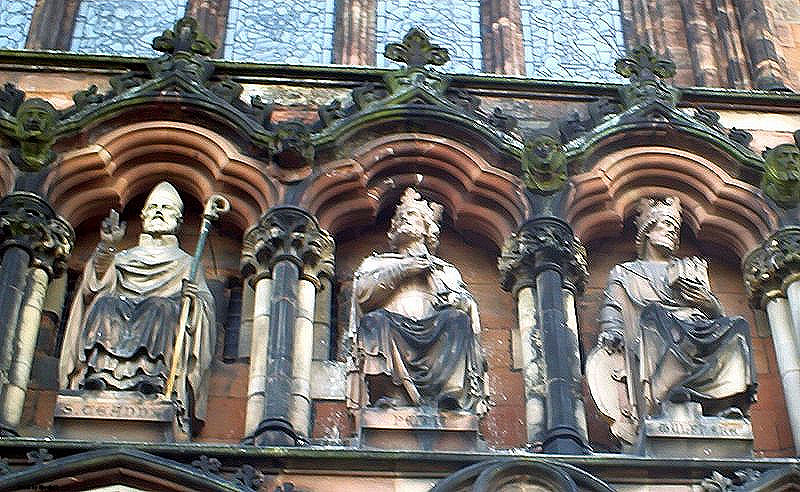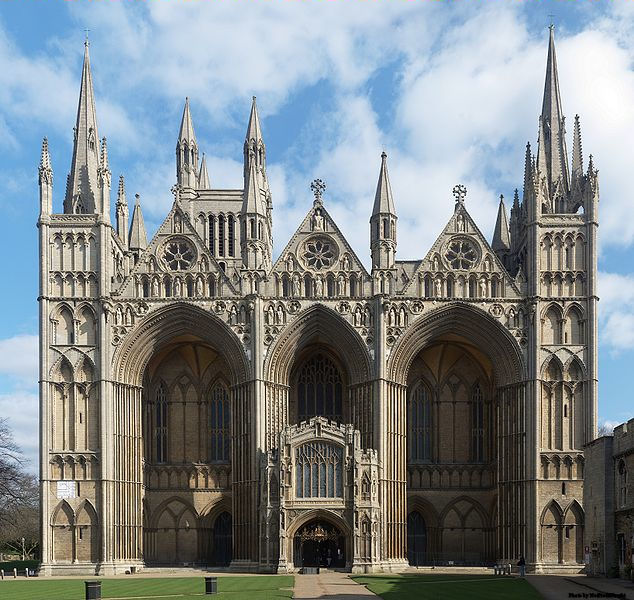Saints Kyneburge, Kyneswide, and Tibba
The two first were daughters of Penda, the cruel pagan king of Mercia, and sisters to three successive Christian Kings, Peada, Wulfere, and Ethelred, and to the pious prince Merowald.
Statue of Peada, center, above western entrance to Lichfield cathedral. St. Chad on the left and Wulfhere on the right.
Kyneburge, as Bede informs us, (1) was married to Alcfrid, eldest son of Oswi, and in his father’s life-time king of Bernicia. They are said to have lived in perpetual continency. By his death she was left a widow in the bloom of life, and, renouncing the world, governed a nunnery which she built; or, according to others, found built by her brother Wulfere, in a moist fenny place, on the confines of the counties of Huntingdon and Northampton, then called Dormundcaster, afterwards from her, Kyneburgecaster, now Caster.
The author of her life in Capgrave says, that she lived here a mirror of all sanctity, and that no words can express the bowels of charity with which she cherished the souls which served God under her care; how watchful she was over their comportment, and how zealous in instructing and exhorting them; and with what floods of tears she implored for them the divine grace and mercy. She had a wonderful compassion for the poor, and strongly exhorted her royal brothers to alms-giving and works of mercy.
Peterborough Cathedral
Kyneswide and Kynedride (though many confound the latter with St. Kyneburge) were also daughters of Penda, left very young at his death. By an early consecration of their virginity to God, they devoted themselves to his service, and both embraced a religious state. Kyneswide took the holy veil in the monastery of Dormundcaster.
The bodies of these saints were translated to Peterborough, where their festival was kept on the 6th of March, together with that of Saint Tibba, a holy virgin, their kinswoman, who, having spent many years in solitude and devotion, passed to glory on the 13th of December. Camden informs us (2) that she was honored with particular devotion at Rihal, a town near the river Wash, in Rutlandshire.
See Ingulphus, Hist. p. 850. Will. of Malmesbury, l. 4. de Pontif. p. 29. Capgrave and Harpsfield, sæc. 7. c. 23.
Note 1. Bed. Hist. l. 3. c. 21.
Note 2. Camden in Rutlandshire.
The Lives of the Saints, Vol. III: March, by Rev. Alban Butler, New York, D.&J. Sadlier Publishers, 1866, pp. 522-523.



No comments:
Post a Comment